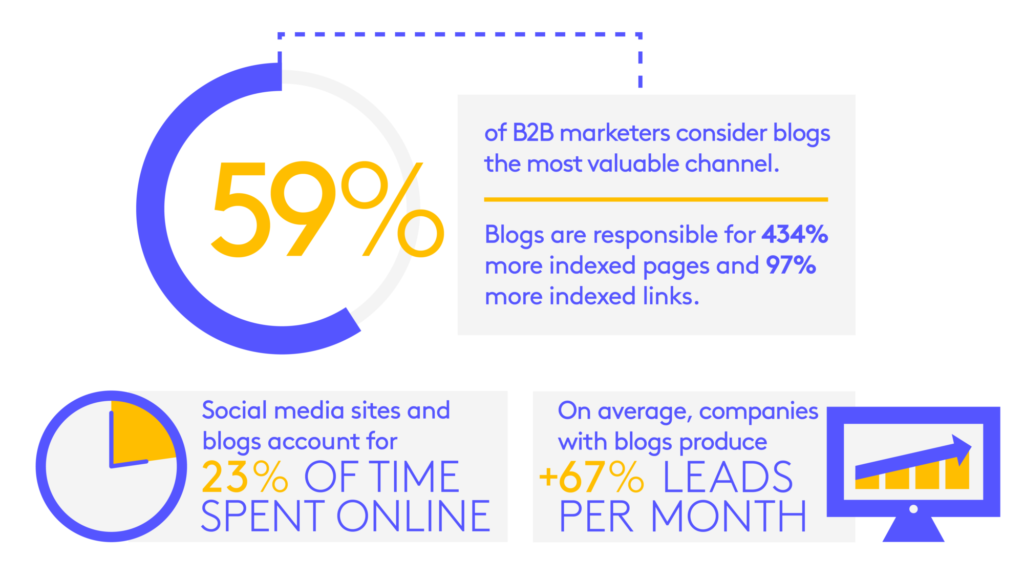
5 Ways To Repurpose Your Virtual Event To Increase ROI
Your virtual event content shouldn’t go to waste after the event. Here are 5 ways to repurpose it to ensure it doesn’t.
Creating a stellar virtual event requires a lot of hard work and most times it is done months in advance. All that effort shouldn’t go to waste once the virtual event is over, however.
The ease of recording virtual events and collecting content from them makes it possible to get the most out of the content by repurposing it, even after the program is over.
What is repurposing?
Repurposing content or content recycling is the art of reusing all or some of the elements of old or current content to boost the content’s reach.
Most times, repurposed content is changed into a new format (e.g., using a blog post to provide information and a script for a YouTube video).
Why repurpose (video) content
The primary reason for repurposing is that it facilitates content scalability. It’s not necessary to shoot every video, craft every article, and create every visual from scratch. Rather, you can take advantage of existing content as the foundation for your social media posts, videos, and webinars.
Content that wouldn’t have been used again can be repurposed to generate a higher return on investment (ROI), offering benefits to both you and your audience. Here’s how:
Save time
Time is money, and creating fresh content takes a lot of time, with a major bulk of that time going towards crafting new ideas. With repurposing, you get to skip this stage and narrow in on topics that produce the best results.
New exposure
When you repurpose your content across various channels, you open it up to a fresh audience that wouldn’t otherwise have discovered your content, thereby getting more bang for your buck and further boosting your ROI.
Amplify your message
Ensuring that your audience understands your message requires repetition and looking at it from different perspectives. Repurposing does just that. It lets you emphasize your message in unique ways.
Boost your SEO strategy
Publishing many pieces of content that revolve around specific keywords that are important to your business works can help improve your rankings. The higher your search rankings, the more eyes there are on your content and the better ROI you’ll get for time and money invested.
How to repurpose virtual event content
Now that we’ve looked at why to repurpose content, let’s dig into some ideas for how to repurpose a virtual event’s content.
Use it as gated content
Perhaps the easiest way to use your content from a live event is to simply put it in the same format on your website as gated content.
Whether it’s an in-depth video from a speaker or a white paper ask yourself: will my audience want to submit their email address to get it?
If your answer is yes, then use it on your site as a free giveaway to entice people to sign up for your newsletter, or alternatively, create a paid membership that will give them access to all of your gated content.
Write a blog about it
As much as every content creator tries to diversify into various content types, blog posts are often the most effective and accessible choice. In fact, 59% of B2B marketers say blogs are the most valuable content channel.
During your virtual event, you might have different content clusters that satisfy your primary topic, and all of them could be used as material for blog posts. Start with the topics that resonate most with your target audience.
You can also encourage guest posts from your event participants (like speakers). These can be step-by-step guides on how to turn the ideas presented in the event into actions or follow-up content on their speech.
Turn it into a podcast
More and more people tune into podcasts each year to hear the latest news or interviews in their area of interest. Take advantage of the content you gathered from your virtual event to create podcast content. Simply record an intro and outro and let the content speak for itself. You can also repurpose the topics and information into new, live podcasts.
Podcasts allow you to reach new audiences across numerous podcast platforms.
Create snackable videos out of it
Videos of your virtual event speakers will also pull in traffic, particularly if they are known in the industry or have something valuable to say. Use videos of yourself and your speakers to create short, “snackable” videos that you can upload to social media platforms like YouTube, LinkedIn, Facebook, and Instagram.
As thought leaders, your target audience is already eager to see what your speakers have to say. Add to this the fact that video is a highly preferred medium, with 71% of B2B marketers using video marketing and 89% of video marketers stating that video has a good ROI.
Replay and/or recreate the event
While your event may remain available on-demand, some people still prefer a live experience. With on-demand replays of the live event, you can get the content out to those who missed out on interactive sessions like the Q&A. This gives your audience more of the feeling of being there. Q&A and discussion sessions are among the most popular engagement techniques in virtual events. You can even replay the event while organizing live Q&As to go along with it.
You can also organize the same event again in a different time slot if there is a demand for it. Since you already have the connections and the event plan, it will be much easier the second time around. However, if your event was large with many speakers, you may want to just redo the top 4 to 10 popular sessions. This allows you to reach segments of your target audience that missed the initial live event.
Key takeaways
Considering the amount of work involved in putting together a virtual event, you’re throwing away time and money if you don’t repurpose it into valuable content.
There are many choices for content repurposing, depending on the type of content you can acquire during or from your event. Whether that’s audio or video from speakers or whitepapers related to their topics, it’s up to you to choose the material that’ll resonate most with your target audience and adapt it to the medium that suits your strategy.

